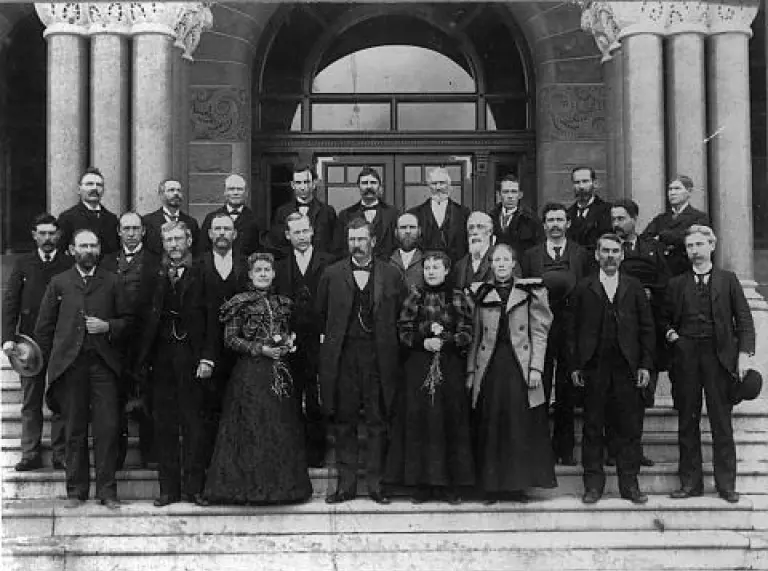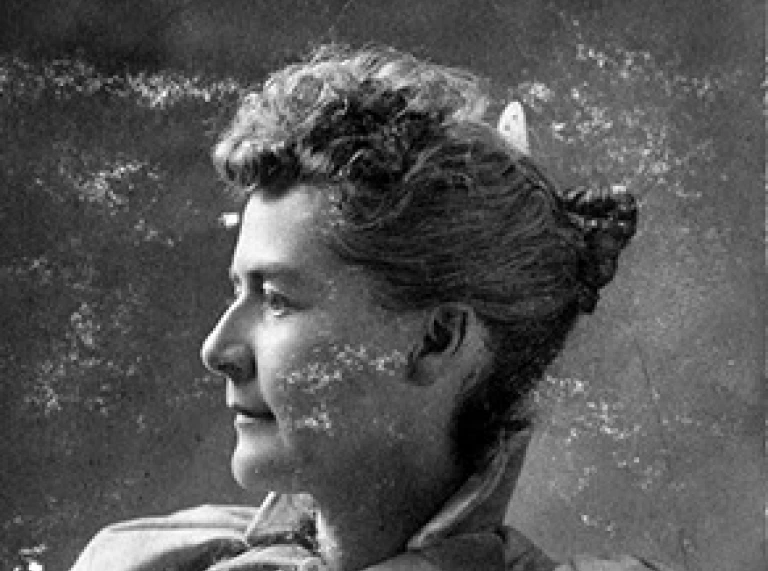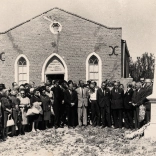In the Utah Senate in Salt Lake City, a statue celebrates a remarkable woman and her trailblazing service to the state. A plaque reads: ‘In memory of Doctor Martha Hughes Cannon. Pioneer doctor. First woman state senator in the US.’
Of all the Welsh who crossed America by ox-cart to Utah in the 19th century, no one distinguished herself more than this carpenter’s daughter from Llandudno.
In 2024, she was finally honoured at the very heart of American democracy. A statue of Martha was given a place in the US Capitol in Washington DC, where every US state is represented by its most illustrious citizens.
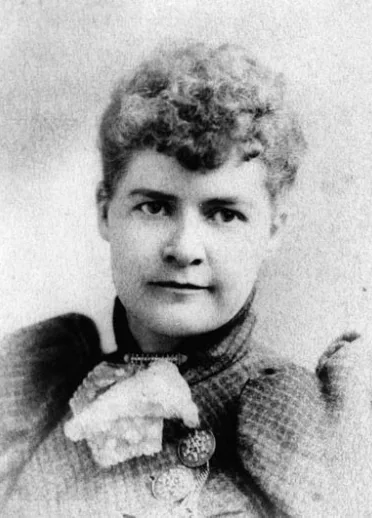
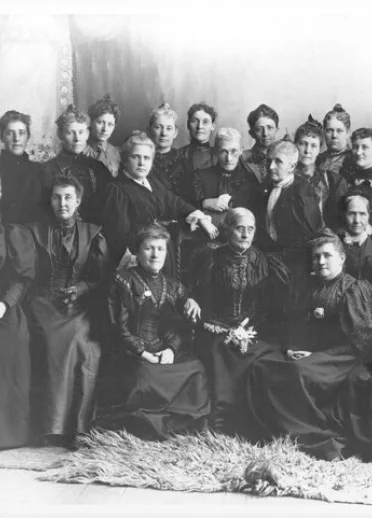
Martha Hughes CannonNo privileged class either of sex, wealth, or descent should be allowed to arise or exist; all persons should have the same legal right to be the equal of every other, if they can.
Early days in Llandudno
Her story begins in Llandudno, where Martha Maria Hughes was born in 1857. She was just two years old when the family left Wales and set off on their long journey to Salt Lake City, the Mormons’ spiritual home (to give you an idea of how long the journey was, Martha was two when they left Wales, but four when they arrived in Salt Lake City).
The Mormon evangelists had arrived from America at the beginning of the 1840s. The missionaries could not have chosen a better place or time to look for troubled, restless souls. It was a time of great social upheaval, of poor harvests, of great want. It was a time of industrialisation, a time of revolution.
The Welsh converts had the skills needed to build the new world. In the Welsh industrial communities, the men knew how to read the coal seams and how to operate the iron furnaces. In the Welsh countryside, there were shoemakers, blacksmiths the carpenters. From Flintshire and Denbighshire came the builders and stonemasons. From the banks of the Cothi and Towy came smallholders and farm tenants; sensible, hard-working, conscientious folk who worried about their salvation.
The epic trek to Utah was a harrowing experience, one that shaped the rest of Martha’s days. Her younger sister, Annie, died on the journey. Then her father died three days after arriving in Utah.
The only medical treatment available had been folk remedies and the power of prayer and holy oil. But by the time Martha came to leave school, Mormon leader Brigham Young’s ideas about medicine had undergone radical change. New scientific ways of treating the sick were being introduced into Utah. Martha was called by the Church to follow a course in medicine, one of the first three women in Utah to be chosen.
In 1878, she entered the University of Michigan, paying her way by working as a maid. She took a postgraduate degree at the University of Pennsylvania, completing a thesis on Rocky Mountain Fever. At the same time, she took a course in pharmacology and, to cap it all, she finished her education with a degree from the National School of Elocution and Oratory in Philadelphia.
On her return to Utah she was appointed to the first women’s hospital in the state, and a career in medicine lay before her. But her life was soon plunged into chaos.
Martha secretly married Angus Munn Cannon, one of the directors of the hospital and a prominent Mormon citizen. He was 23 years older than Martha and an enthusiastic polygamist. Martha became his fourth wife; Angus later married twice more, and his six wives were to bear him 27 children.
Martha could not have entered a polygamous marriage at a worse time. A wave of anti-Mormon sentiment was sweeping through the US. Angus was arrested, and Martha – now pregnant – was subpoenaed to give evidence against him. Rather than incriminate her husband, she fled to Europe, taking newborn Lizzie with her. ‘I would rather be a stranger in a strange land,’ she wrote, ‘and be able to hold my head up among my fellow human beings than be a sneaking captive at home.’
Finally, in December 1887, the warrant for her arrest expired and she returned to the US. By 1890, the Mormon church had capitulated and stopped the practice of polygamy. Back in Salt Lake City, Martha embarked on a new career, establishing a training college for nurses. But then she became pregnant again, and once again had to abandon her goals, fleeing to California.
Activism
Undaunted, Martha became a leading activist in the women’s rights movement. From 1870 to 1887, the women of Utah had been allowed the vote – but this right was abruptly revoked. It sparked a fierce campaign for re-enfranchisement in which Martha made a name for herself not only in Utah, but throughout the continent.
She was invited to speak in the 1893 World Fair in Chicago. She went to Washington to report on the progress of the suffrage campaign in Utah. The Chicago Record noted that ‘Mrs Dr Martha Hughes Cannon … is considered one of the brightest exponents of the women’s cause in the United States.’
Utah at this time had yet to be made a state. But it had been promised that if it abandoned polygamy, statehood would follow. In 1896, the promise was kept and the re-enfranchisement of women was included in the constitution of the new state. It would be another 25 years before women’s suffrage became general throughout the US.

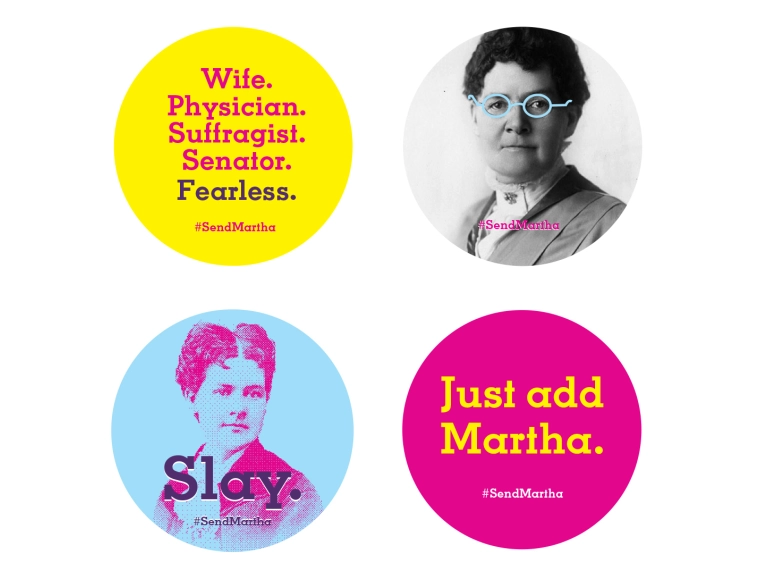
Martha Hughes CannonOne of the principal reasons why women should vote—is that all men and women are created free and equal.
In the ensuing election, Martha was one of the five Democratic candidates campaigning to represent Salt Lake City in the new Utah Senate. Standing against them were five Republicans, one of whom was her husband, Angus.
Much was made in the press of the duel between a husband and wife. The Salt Lake Herald declared, ‘Send Mrs Cannon to the State Senate and let Mr Cannon remain at home to manage home industry. Mrs Mattie Hughes is the better man of the two.’ Martha and the Democrats swept the board. She was the first woman to be elected to any senate in the nation.
Martha proved a great success as a senator. In her first month in office, she introduced a bill to establish a public health authority which was instrumental in improving the water supply throughout the state and controlling infectious diseases. She guided an ‘Act to Protect the Health of Women and Girl Employees’ on to the statute books and an ‘Act Providing for Compulsory Education of Deaf and Dumb Children’. In 1899, there was a move to nominate her for a seat in the US Congress in Washington.
Once more her plans were complicated by pregnancy, but this time, it became a national scandal. Ten years after plural marriages were made illegal, here was a prominent public figure brazenly flouting the law. Angus was arrested and heavily fined, but Martha paid more dearly. After the federal government revoked the right of women to vote, Martha served her full term, but didn't run for office again.
Although she continued her medical work, she spent more of her time with her children. Eventually she left Utah and settled in Los Angeles with her son, and there she died in 1932.
For 50 years, Martha’s name and her career were forgotten. But her star rose again when she was seen to have been fighting many of the battles that women everywhere are still fighting today. She fought for the right of women to pursue the career of their choice. She fought for gender equality. Always, she fought for the right of women to lead more enriching, rewarding and fulfilling lives.
For more about the life of Martha Hughes Cannon, visit the Utah Women's History website.
